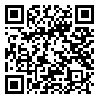Volume 17, Issue 4 (10-2023)
payavard 2023, 17(4): 314-323 |
Back to browse issues page
Ethics code: IR.MEDIL.AM.REC.1401,124
Download citation:
BibTeX | RIS | EndNote | Medlars | ProCite | Reference Manager | RefWorks
Send citation to:



BibTeX | RIS | EndNote | Medlars | ProCite | Reference Manager | RefWorks
Send citation to:
Ali Gholami O, Sadeghifar J, kabiri B, Ghasemyani S, Sarhadi S, jorvand R. A survey Study: Health Literacy and Affecting Factors of Adults in Southwest Iran. payavard 2023; 17 (4) :314-323
URL: http://payavard.tums.ac.ir/article-1-7509-en.html
URL: http://payavard.tums.ac.ir/article-1-7509-en.html
Omid Ali Gholami1 
 , Jamil Sadeghifar2
, Jamil Sadeghifar2 
 , Bahareh Kabiri3
, Bahareh Kabiri3 
 , Shabnam Ghasemyani4
, Shabnam Ghasemyani4 
 , Sadegh Sarhadi5
, Sadegh Sarhadi5 
 , Reza Jorvand *
, Reza Jorvand * 
 6
6

 , Jamil Sadeghifar2
, Jamil Sadeghifar2 
 , Bahareh Kabiri3
, Bahareh Kabiri3 
 , Shabnam Ghasemyani4
, Shabnam Ghasemyani4 
 , Sadegh Sarhadi5
, Sadegh Sarhadi5 
 , Reza Jorvand *
, Reza Jorvand * 
 6
6
1- Master of Science in health education, Vice-Chancellor of Health, Ilam University of Medical Sciences, Ilam, Iran
2- Associate Professor, Department of Health Services Management. Health and Environment Research Center, Ilam University of Medical Sciences, Ilam, Iran
3- Ph.D. in Health Education and Health Promotion, Health and Environment Research Center, Ilam University of Medical Sciences, Ilam, Iran
4- Ph.D. in Health Care Management, School of Health Management and Information Sciences, Iran University of Medical Sciences, Tehran, Iran
5- Master of Science in Ergonomics, Health and Food Safety Secretariat. Ilam University of Medical Sciences, Ilam, Iran
6- Assistant Professor , Department of Public Health, Psychosocial Injuries Research Center, Ilam University of medical Sciences, Ilam, Iran ,jorvand-r@medilam.ac.ir
2- Associate Professor, Department of Health Services Management. Health and Environment Research Center, Ilam University of Medical Sciences, Ilam, Iran
3- Ph.D. in Health Education and Health Promotion, Health and Environment Research Center, Ilam University of Medical Sciences, Ilam, Iran
4- Ph.D. in Health Care Management, School of Health Management and Information Sciences, Iran University of Medical Sciences, Tehran, Iran
5- Master of Science in Ergonomics, Health and Food Safety Secretariat. Ilam University of Medical Sciences, Ilam, Iran
6- Assistant Professor , Department of Public Health, Psychosocial Injuries Research Center, Ilam University of medical Sciences, Ilam, Iran ,
Abstract: (528 Views)
Background and Aim: Health literacy is recognized as a key determinant of health and is a central focus of public health policy strategies. The present study aimed to assess the health literacy level and identify the factors influencing it among the clients of comprehensive health service centers in Ilam city.
Materials and Methods: In 2022, a descriptive-analytical study was conducted to examine 429 clients aged 18-65 years who visited comprehensive selected health service centers in Ilam city. For adults the data collection tool used was the Helia health literacy questionnaire. Sampling was conducted in nine clusters, with each cluster consisting of 50 samples. The data was analyzed using SPSS software, which included descriptive statistical tests, Pearson’s correlation coefficient, and one-way analysis of variance, with a significance level set at 0.05.
Results: Based on the results, the average health literacy score was 80.16 ± 16.50. In terms of health literacy, 18.97% of people had inadequate or not very adequate health literacy, while 44.39% of the participants had excellent health literacy. The average health literacy scores across different dimensions are as follows: access to health information 65.74, comprehension of information 81/81, reading information skills 12.74, evaluation of information 05.75, and decision making and behavior based on information 61.92. A significant relationship was observed between job, education, and income variables and various dimensions of average health literacy (p-value≤0.001). However, there was no significant relationship between general health literacy and age, gender, and place of residence (P≤0.05).
Conclusion: The results of the present study demonstrate that vulnerable groups have significantly lower literacy levels. Furthermore, given the impact of education on enhancing people’s health literacy, it is advisable to leverage mass media, social networks, and educational centers to enhance literacy levels as a potential factor in community health.
Materials and Methods: In 2022, a descriptive-analytical study was conducted to examine 429 clients aged 18-65 years who visited comprehensive selected health service centers in Ilam city. For adults the data collection tool used was the Helia health literacy questionnaire. Sampling was conducted in nine clusters, with each cluster consisting of 50 samples. The data was analyzed using SPSS software, which included descriptive statistical tests, Pearson’s correlation coefficient, and one-way analysis of variance, with a significance level set at 0.05.
Results: Based on the results, the average health literacy score was 80.16 ± 16.50. In terms of health literacy, 18.97% of people had inadequate or not very adequate health literacy, while 44.39% of the participants had excellent health literacy. The average health literacy scores across different dimensions are as follows: access to health information 65.74, comprehension of information 81/81, reading information skills 12.74, evaluation of information 05.75, and decision making and behavior based on information 61.92. A significant relationship was observed between job, education, and income variables and various dimensions of average health literacy (p-value≤0.001). However, there was no significant relationship between general health literacy and age, gender, and place of residence (P≤0.05).
Conclusion: The results of the present study demonstrate that vulnerable groups have significantly lower literacy levels. Furthermore, given the impact of education on enhancing people’s health literacy, it is advisable to leverage mass media, social networks, and educational centers to enhance literacy levels as a potential factor in community health.
Send email to the article author
| Rights and permissions | |
 |
This work is licensed under a Creative Commons Attribution-NonCommercial 4.0 International License. |



